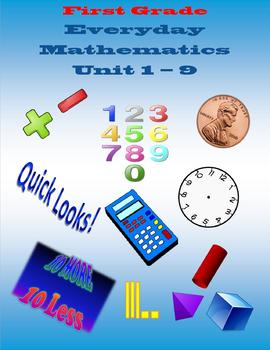First Grade Everyday Mathematics Units 1-9
Mister L's Room
13 Followers
Grade Levels
K - 2nd
Subjects
Resource Type
Standards
CCSS1.MD.A.1
CCSS1.MD.A.2
CCSS1.MD.B.3
CCSS1.MD.C.4
CCSS1.NBT.A.1
Formats Included
- Zip
Pages
900 pages
Mister L's Room
13 Followers
Description
Having completed the final presentation for the Everyday Mathematics units 1 -9, I thought I would bundle them all together to bring the cost down. All total, you get approximately 900 slides that follow the Everyday Mathematics lessons day to day. I didn't create these slides to take the place of the teachers manual, rather, to afford a visual representation of some of the lessons. Each lesson starts with the daily routines and gets directly into the lesson for the day. I used a lot of animation and color to make these slides appear more like a video game; it always keeps their attention!
I have provided these slides to several teachers to see how they like them and the response has been 100% positive. Additionally, if the test scores in my room so far are any indication as to what is to come, academically speaking, it's going to be a great rest of the year in math! I hope you enjoy using these slides as an added manipulative as much as we have! If you have any questions, please don't hesitate to contact me!
I have provided these slides to several teachers to see how they like them and the response has been 100% positive. Additionally, if the test scores in my room so far are any indication as to what is to come, academically speaking, it's going to be a great rest of the year in math! I hope you enjoy using these slides as an added manipulative as much as we have! If you have any questions, please don't hesitate to contact me!
Total Pages
900 pages
Answer Key
N/A
Teaching Duration
45 minutes
Last updated Jan 2nd, 2019
Report this resource to TPT
Reported resources will be reviewed by our team. Report this resource to let us know if this resource violates TPT’s content guidelines.
Standards
to see state-specific standards (only available in the US).
CCSS1.MD.A.1
Order three objects by length; compare the lengths of two objects indirectly by using a third object.
CCSS1.MD.A.2
Express the length of an object as a whole number of length units, by laying multiple copies of a shorter object (the length unit) end to end; understand that the length measurement of an object is the number of same-size length units that span it with no gaps or overlaps.
CCSS1.MD.B.3
Tell and write time in hours and half-hours using analog and digital clocks.
CCSS1.MD.C.4
Organize, represent, and interpret data with up to three categories; ask and answer questions about the total number of data points, how many in each category, and how many more or less are in one category than in another.
CCSS1.NBT.A.1
Count to 120, starting at any number less than 120. In this range, read and write numerals and represent a number of objects with a written numeral.





